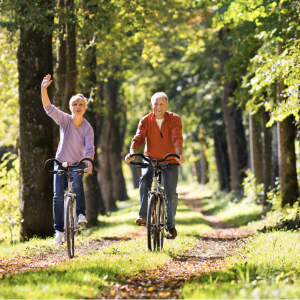Any pain experienced in our bodies can really drive home how much we use a certain body part. You don’t realise how much we use certain limbs until we experience pain in them, at which point it could get tricky to do certain activities in daily live, such as household chores or gardening!
The most common thing people will do when they experience pain is to avoid the movement which causes it, and this is just human nature. If something hurts, we don’t want to keep experiencing that hurt! Even though a movement may cause discomfort or pain, there will be other ways to perform that movement comfortably. A lot of the time, the movements we avoid are either necessary, such as hanging the washing, stirring a pot, or getting up from a low seat such as a toilet, or things that bring us happiness, such as picking up our grandkids!
So what can we do to manage our pain without losing function?
Find what time works best for you
As soon as we wake up, we can experience stiffness. It can take a little while for the body to warm up and get into the rhythm of moving. If you are a person who experiences discomfort in the morning but it has eased by lunchtime, consider that perhaps the afternoon may be a better time for you to go for a walk or do the more strenuous chores that need doing. This way, you will be able to achieve more and will feel better once you have finished your activity, rather than sore.
Give yourself a break
Even the most hardened exercise professionals recognise that their bodies need a rest! If your body does not like consecutive days of exercise, you may need to give yourself a rest day in between, and that is ok! Try and schedule your exercise days so that resistance training falls on alternating days – on your rest days, you can try a gentle walk or perhaps a stretching session.
See an experienced exercise professional
There are certain movements that can’t be avoided in day-to-day life – you can’t stop using the toilet just because your knees get sore when standing up from it! There are ways to do movements that will work the same muscles, but not cause pain. Seeking the help of an accredited exercise professional can help with this! An understanding of different types of muscle contractions, as well as contraindicated movements, is important and a professional can help implement these into your exercise routine.
Be able to tell types of ‘pain’ apart
A common response we hear to ‘where can you feel this exercise working?’ is ‘yes it’s hurting in there’. Many people associate any kind of different sensation to ‘normal’ as ‘pain’. It is important to be able to differentiate between different sensations. For example, muscle effort is often regarded as pain, but it generally stops once the exercise is stopped, and afterwards the muscle can feel warm. This is a good sensation! Delayed Onset Muscle Soreness (DOMS) can also typically be identified as pain, but this is also normal after a structured session of resistance training as your muscles adapt and recover. DOMS will generally be less intense after 1-2 days. Sensations you should inform your GP or exercise professional about include pins and needles, numbness or pain that lingers or intensifies even after the movement has stopped.
Remember, movement is medicine! We can’t avoid moving our bodies; movement is what the body is designed to do. There are many ways to move safely – often people feel better once they have done a little physical activity! All movement counts, it does not matter if you perform it seated or standing, with a maximal weight or unweighted, walking or running.

